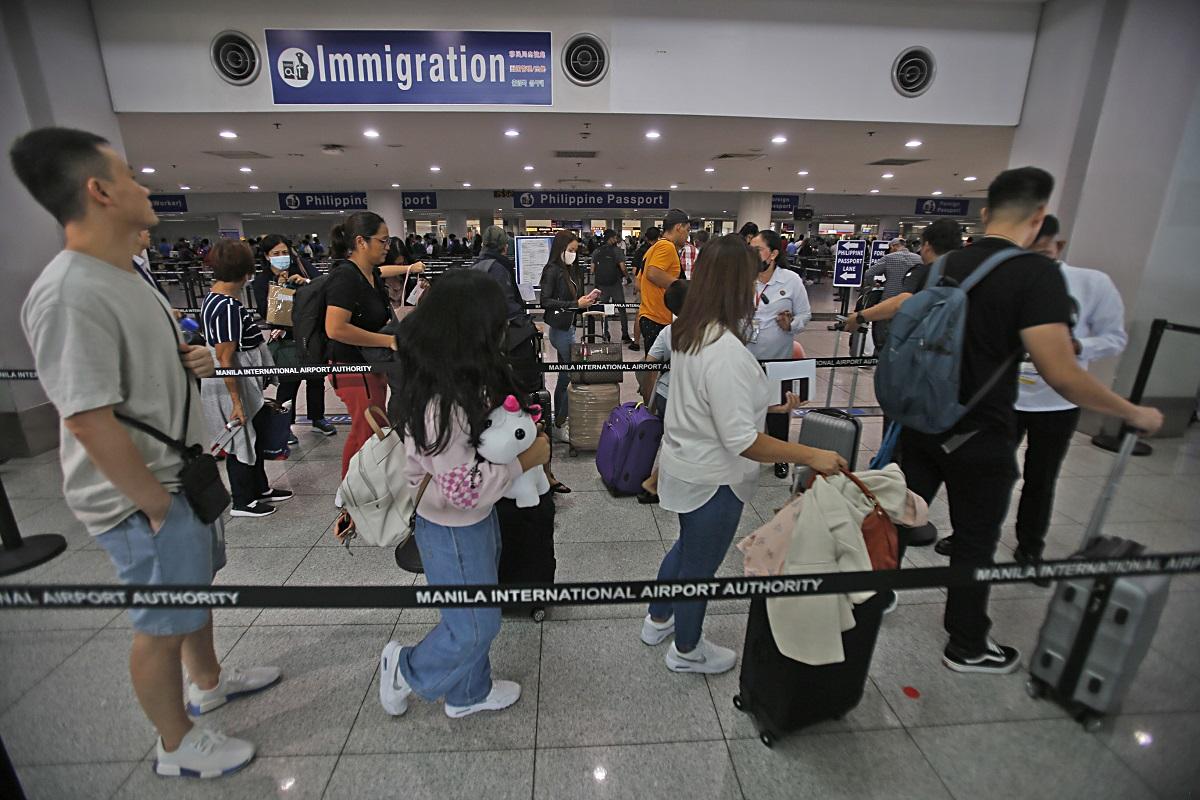NAIA braces for over 1 million passengers during Holy Week
The Manila International Airport Authority (MIAA) on Thursday said it is expecting over one million passengers to flock to the Ninoy Aquino International Airport’s (NAIA) four terminals during the Holy Week. In a news release, the MIAA said it is preparing for the influx of over a million travelers with its “OPLAN Biyaheng Ayos: Semana […]


The Manila International Airport Authority (MIAA) on Thursday said it is expecting over one million passengers to flock to the Ninoy Aquino International Airport’s (NAIA) four terminals during the Holy Week.
In a news release, the MIAA said it is preparing for the influx of over a million travelers with its “OPLAN Biyaheng Ayos: Semana Santa 2024” from March 24 to March 31.
The more than one million anticipated travelers that will go to the country’s main airport is 15% higher than the 926,755 passengers that passed through NAIA from Palm Sunday to Easter Sunday last year, according to MIAA General Manager Eric Ines.
The MIAA said that in the first 14 days of March 2024 alone, passenger numbers have reached 1,853,132, ranging from 128,000 to 138,000, with a daily average of 132,367.
During the Holy Week, the airport authority said passenger traffic could reach 140,000 on a single day, or close to the pre-pandemic Lenten season, which recorded 1,126,501 passengers over eight days, averaging 140,812 daily.
“Our domestic operations, in particular, have been consistently surpassing pre-pandemic flight movement and passenger volume. We anticipate travelers taking advantage of exploring local destinations, the ease and convenience of air travel, summer airline promotions, or simply vacationing and being with family during this time,” said Ines.
“We are prepared for this influx at our terminals, especially as Holy Week coincides with summer, historically a peak season for air travel,” added the MIAA chief.
The NAIA also has adequate manpower, equipment, and optimal working conditions for amenities and key facilities, including critical airport utilities and backup systems, the MIAA chief assured the public.
There were also standby generator sets supplying electrical power to the airport’s vital facilities in cases of power failure.
All complexes of the four passenger terminals of NAIA, and the International Cargo Terminal, have been undergoing monthly scheduled test runs since January 16, 2024, to determine the operational performance and ensure the reliability of these gensets.
In December 2023, the MIAA said it completed a series of planned electrical maintenance activities at NAIA Terminal 3, aimed at enhancing the overall reliability of the largest terminal’s electrical systems.
To address El Niño’s impact and rising temperatures, the airport authority said it is replacing fan coils in terminal air conditioning units and conducting routine inspections and maintenance of air handling units, while the Authority has been coordinating with Maynilad for uninterrupted water service.
To accommodate the anticipated increase in flights during the Lenten season, the MIAA said it has also adjusted the scheduled closure of Runway 06/24 for two consecutive Mondays and Wednesdays, specifically March 25 and 27, and April 1 and 3.
The MIAA has reduced the closure period from five hours, originally set from 12:30 a.m. to 5:30 a.m., to three hours, now from 1:30 a.m. to 4:30 a.m. on the specified dates.
The airport authority added it has continuous collaboration with government agencies within NAIA, such as the Bureau of Immigration (BI) and the Office for Transportation Security (OTS), to manage critical choke points or queues and ensure fully staffed immigration counters and final security points, respectively.
Airlines, meanwhile, were reminded to plan for contingencies, including allocating standby or spare aircraft for unforeseen problems; adhere to the Air Passenger Bill of Rights in taking care of their passengers; deploy enough sweepers to locate passengers requiring prioritization in immigration queues; open check-in counters earlier, if possible, close them on time, and ensure full staffing of these counters at all times.
Airlines were also advised to establish help desks within their respective areas, while the Civil Aeronautics Board (CAB) and other agencies will also be ready to provide passenger assistance at their respective help desks in the terminals.
The MIAA said it continues coordination with the PNP Aviation Security Group, local government units of Pasay and Parañaque, and the Metropolitan Manila Development Authority (MMDA) to ensure smooth traffic flow in thoroughfares leading to and from the terminals.
“Meanwhile, to prevent missing their flights, passengers are urged to be in NAIA at least 3 hours before international departure and 2 hours before domestic departure. Some airlines may suggest an earlier check-in time to prevent long lines at the counters. Travelers with only hand-carry luggage are encouraged to check-in online or use the check-in kiosks,” the airport authority said.
“To expedite processing at Bureau of Quarantine (BoQ) and BI counters, international inbound travelers to the Philippines are reminded to complete eTravel registration online before arrival, with Philippine passport holders encouraged to use immigration e-gates upon arrival,” it said.
Meanwhile, operators of transport terminals are also ramping up preparations to accommodate Filipino travelers expected to flock to bus stations and sea ports.—AOL, GMA Integrated News














